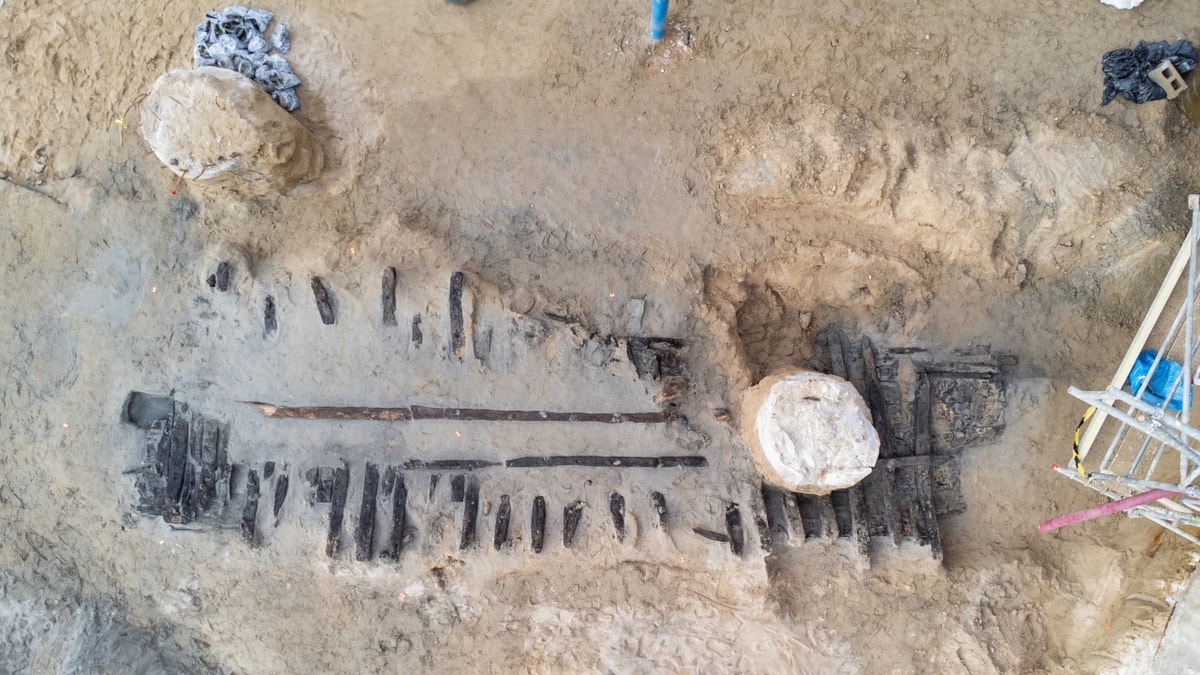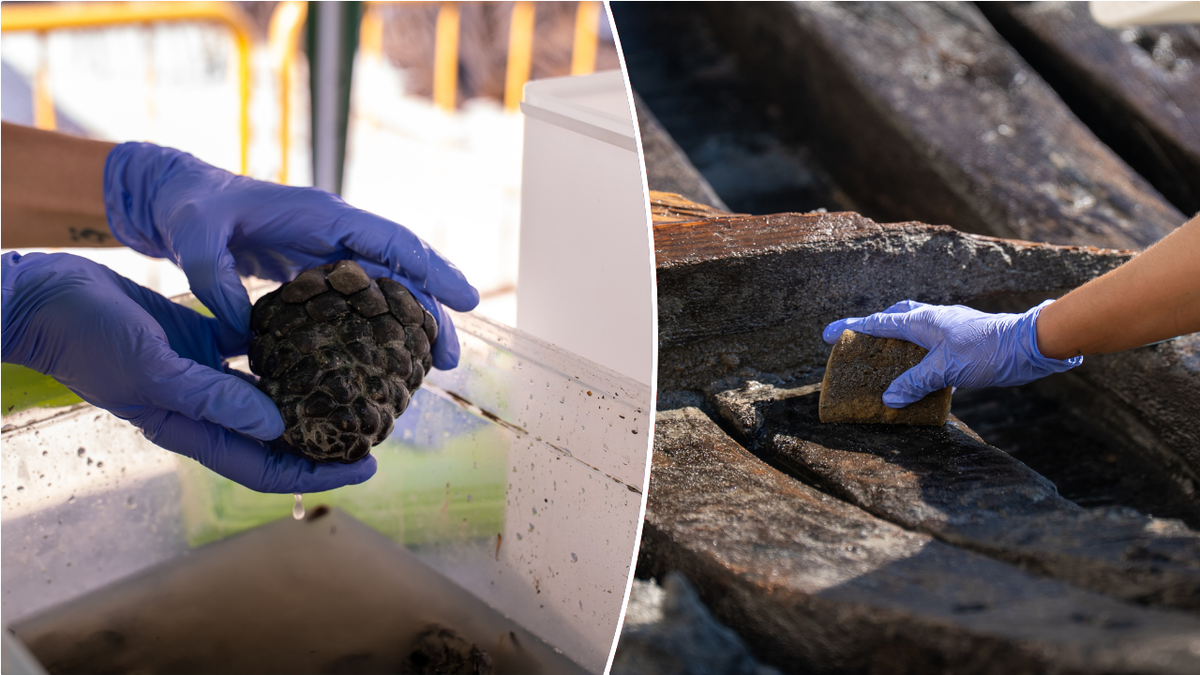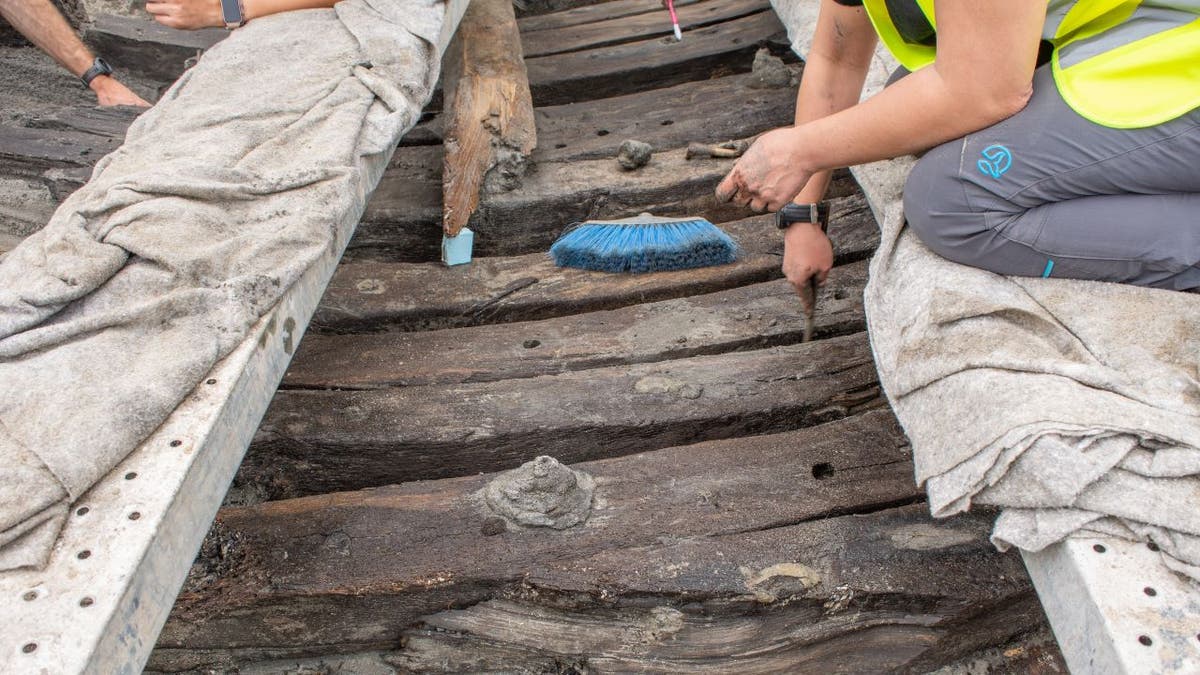A century -old ship breakdown has recently been found in an impossible place in Spain: a former fish market.
The Barcelona Institute of Culture (ICUB) says that the decaying ship was found in the former Merkat del Pix – translating it into the “Fish Market” in the Catalan capital. The first known as Seotadella, the ship was found between April 10 and April 15.
Invented during construction work, the ship is from the 15th to the 16th century. The discovery reflects the marine history of Barcelona, said the ICUB.
Eden’s original location garden can be ‘only’ to ‘be’ unusual tourist landmark, demanding new argument
The statement, which was translated into English from Catalan, said, “Beginning in 1, the construction of the first artificial dock was changed to the coastline, and the Sandbar known as Taska had been protected for centuries, disappeared,” said the company translated from Catalan to English.
“The combination of coastal streams, the combination of the BASS river and the combination of storms quickly progresses on the beach, keeping the ancient marine places covering.”
Archaeologists in Spain recently discovered the residues of a shipwreck below a historic Tihasik region in Barcelona. (Barcelona Culture Institute (ICUB))
The ICUB also mentions that the main structure of the ship – a “skeleton” length is 32 feet and in width of about 10 feet – there are also 30 curved wood frames.
Historic Tihasik opens the door for visitors 320 years after the Maryland Church is closed
“At least seven spots in the hall [were also found]“The statement said.
“The planks are nailed in the frames with a circular-section wooden, a type of wood nail is used to join.”

According to archaeologists, the ship is broken in the 15th or 16th century. (Barcelona Culture Institute (ICUB))
Aikub mentions, “Two longitude pieces – Pamelars or Karat – are also stored with iron nails,” ICUB mentions.
“This system, known as skeleton construction, was prevalent in the medieval Mediterranean, and it spread throughout Europe, spreading from the middle of the tenth century.”
For further lifestyle articles, see FoxNews.com/Lifestyle
Researchers are currently studying organic remnants near the shipwreck, which includes hazelot seeds and the entire pine cone and “may contain chronological like ships.”

Pine cone is suspected a few hundred years ago, it was also found on the Barcelona excavation site. (Barcelona Culture Institute (ICUB))
Nevertheless, the ICUB also warned that the ships of the ship were “in very fragile storage at the moment”.
The survival of the ship is considered a miracle, as the wood is easily degraded.
The shipwreck will be transferred to a facility where its wood will be deserted to save it.
“Although wood is a common component of the historical Tihasic ship building, it only stores in a very certain environment like aquatic land and is rapidly exposed to the air,” the government agency mentions.
Click here to sign up for our lifestyle newsletter
The statement also said, “The water -containing wood is extremely sensitive, and to prevent it from drying and degradation it is partially covered with the original sand,” the statement added.
“The Archeology Service of Barcelona, the Museum of Catalonia Archeology – Catalonia, is working to ensure proper documentation and preservation of the structure, including advice on the Underwater Archeology (CASC).”

Archaeologists are cautiously in the process of conservation, which is extremely subtle after discovering. (Barcelona Culture Institute (ICUB))
Archaeologists are planning to do extra work, including 3D documentation, identification, sample and water-filled containers.
The shipwreck will be transferred to a facility where its wood will be deserted to save it.
Click here to get Fox News app
“This treatment is essential for preserving both the physical structure of the ship and its archaeological value, as it is essential for the ship’s physical structure and its archeological value, as it forms a unique source of knowledge about the navigation and ship building used in Barcelona in the 15th and 16th century,” the ICUB press statement said.
Leave a Reply